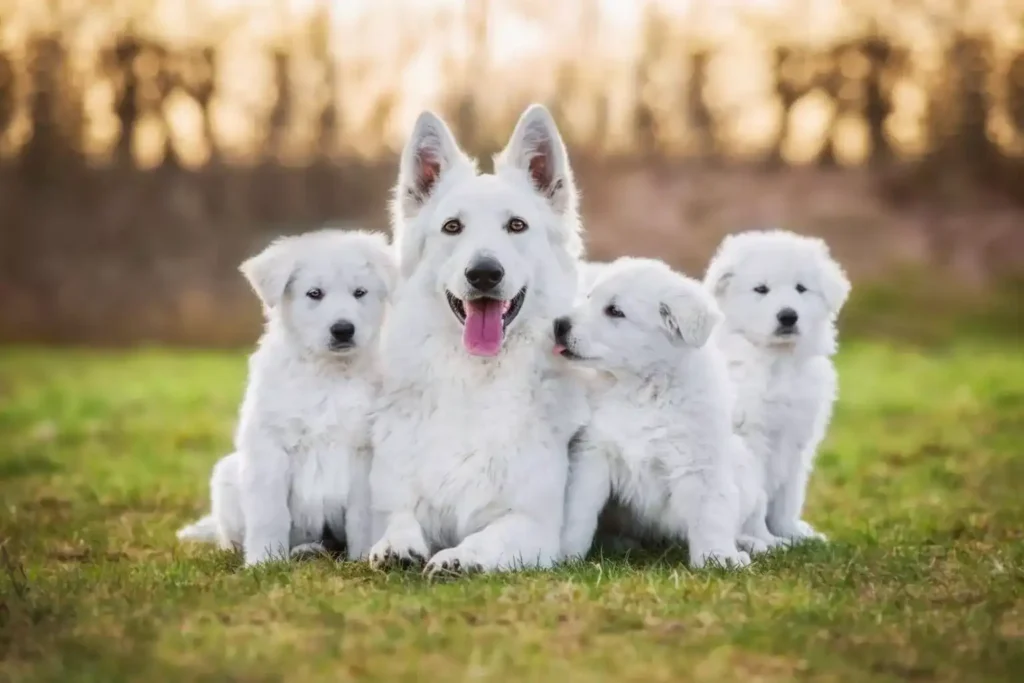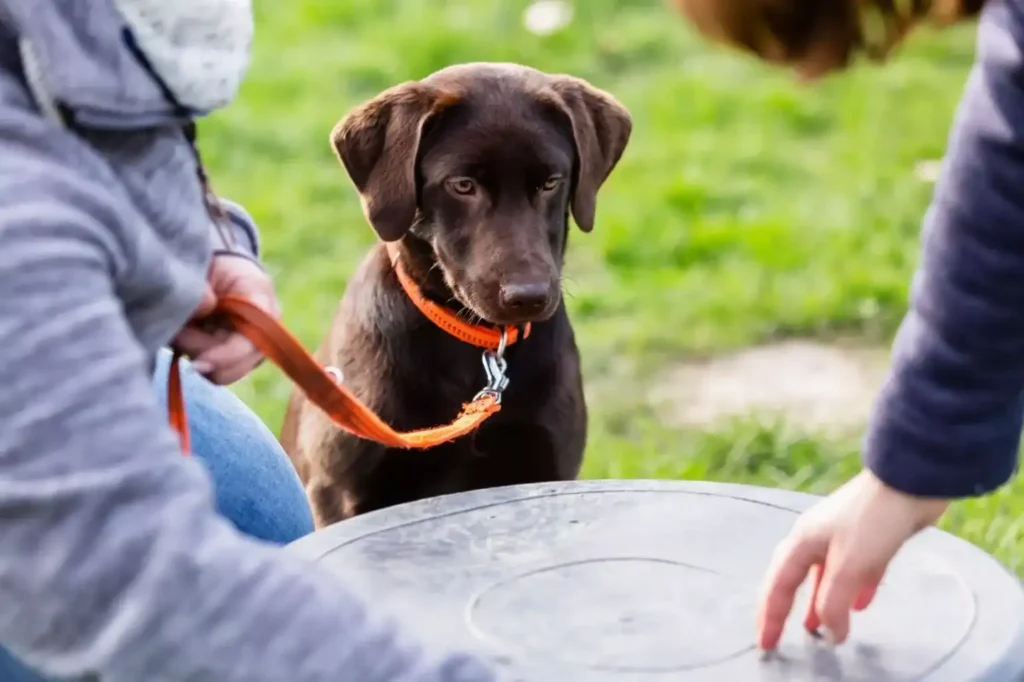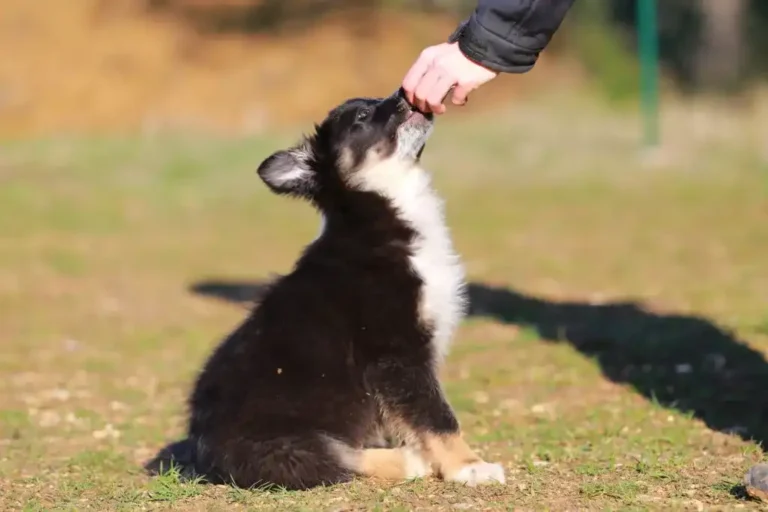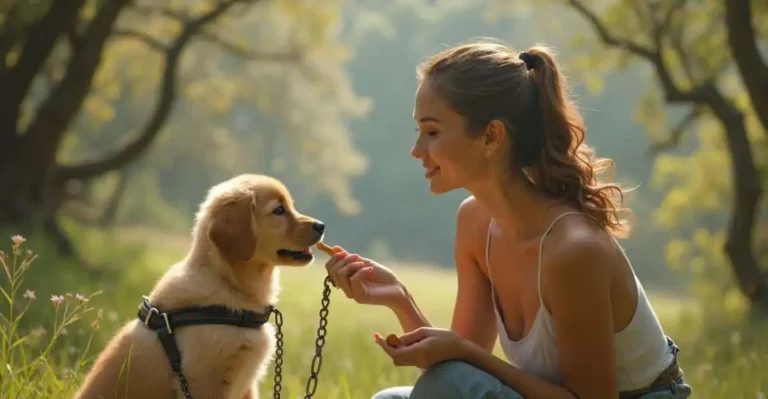Puppy Development From Birth to Adult Dog
Every puppy goes through many stages of development before finally growing into an adult dog. Here in the AllDogsThings you will find out what is important in the development from a puppy to a confident and relaxed dog.

Below we take a closer look at the different stages of puppy development. In some of this, the bitch and the breeder play a very important role. But as soon as your puppy moves in with you, you are responsible for helping it along the way.
The neonatal/vegetative phase
This phase begins with the birth of the puppies and covers the first two weeks of life. The puppies are born blind and deaf. The most important emotions during this early period are hunger and cold.
Most of the time the little ones sleep or seek contact with their mother to eat and keep warm. In search of this, they show typical searching movements: The puppies move their heads back and forth and make circular movements. They do this to stay close to the nest.
Already in this phase the puppy starts to learn. When hungry or cold, the puppies must actively do something about it and be rewarded with success in the form of food intake or body contact. This experience should not be taken away from them by humans helping too much. Mild stress promotes a stable emotional balance.
During this phase, the puppies should be provided with loving attention, but not excessively so.
The transitional phase in puppy development
The third week of a puppy’s life is called the transitional phase. During this time, the eyes and auditory canals open, and the baby teeth erupt. However, the ability to see does not begin until the 17th or 18th day. This increase in sensory input causes the puppies to begin to respond to their siblings, people, and their surroundings.
Activity increases even though they still sleep a lot. Due to increased movement, for example when the puppies crawl backwards, muscle building begins and coordination increases.
During this phase of the puppy’s development, initial socialization also occurs as the little dogs make contact with their littermates. The breeder can promote and focus the habituation to humans by petting them regularly all over their body.
The socialization phase
The socialization phase is the most important developmental stage in a young dog’s life. Depending on the breed, it can last from the fourth to the 16th week.
This first sensitive phase is characterized by being formative and is crucial in terms of learning. All environmental stimuli and living stimuli (other dogs and other living beings) that the puppy becomes familiar with in a positive way during this phase can be stored in its memory as normal. This helps the dog to approach new stimuli or situations with confidence.
Since puppies’ wariness towards new things increases from the seventh week, it is very important that they experience as many impressions as possible already in the third to fifth week. Curiosity takes over in this phase, and learning occurs without the need for a special reward. This means that the first training can be approached in a playful way at an early stage.
When your puppy is about eight weeks old, he will move in with you. At this point, the socialization phase is far from over. Now you must take on the responsibility of introducing your puppy to his new surroundings and showing him as much as possible in peace and quiet.
Important: Puppies should already have a lot of positive experiences and impressions from the breeder. Socialization must then continue after they move into their new home.
The adolescent stage of puppy development
The next stage in the development of puppies is the adolescent stage. It begins with the change of teeth and ends with the onset of sexual maturity (the onset of heat in bitches and the lifting of the legs in males). Depending on the breed, this can occur at the age of six to twelve months. In this stage of development, the changes that are not as severe as in the previous stages no longer occur.
The massive growth spurt of the first few months is over and the puppies have reached about two-thirds of their adult size at the beginning of the phase. Strength and motor skills in particular are now increasing.
Loving and consistent upbringing
Even in this phase of life, you should continue to train your young dogs in a playful but absolutely consistent manner. In increasingly longer units, you should also develop the training of basic commands and motor skills. In this way, you create another foundation for a well-behaved dog.
It is also normal behavior during this developmental phase for the young dog to repeatedly test boundaries. This is how it learns to place the social structures in its environment and integrate into them. Therefore, loving and consistent leadership is also important in everyday life!
Often a new phase of anxiety occurs around four months. Suddenly, already familiar environmental stimuli are classified as dangerous again. During this phase, it is important that you show your puppy that he can trust you by being calm and relaxed. Give him time to look at the new situation relaxed and at his own pace.

The teenage phase
Depending on the breed, the young dog enters the teenage phase at six to twelve months. This begins with sexual maturity and transitions to the maturity period at about two years.
Sexual maturity
The first part of this phase, which begins with sexual maturity, can last until the second year of life depending on the type and breed of dog. It is also called the rookie years or adolescence.
When sex hormones first kick in, young dogs often find it difficult to cooperate – much like a young person going through puberty. Suddenly you have a young dog who has learned all the commands and maybe even a few tricks, but suddenly can’t even do the “sit” command anymore.
Now it is important to be relaxed, but still consistent. You can build on the trust that you have developed and formed in the first few months. Continue to train commands in a loving way.
Contact with other dogs is also very important during this phase. However, these should be as calm and controlled as possible and not develop into power struggles. Avoid conflicting contacts at all costs.
During this time, the young dog also slowly matures into an adult dog.
The ripening period
Depending on the breed, the so-called maturation period begins at about two years of age. In many cases, typical breed and character traits only appear at this time and become established. Territorial behavior of varying degrees often occurs.
Hormone levels stabilize and so does behavior towards other dogs. The dog no longer accepts every other dog as a playmate, and intrusive behavior is sometimes punished.
The adult phase
Your dog is showing a mature and stable personality and physical development. As a rule, a few negative experiences cannot shake it. However, consistent behavior on your part is still necessary. From time to time, your dog will test whether the existing boundaries and rules still apply.
In general, the larger the breed, the later the dog matures.




